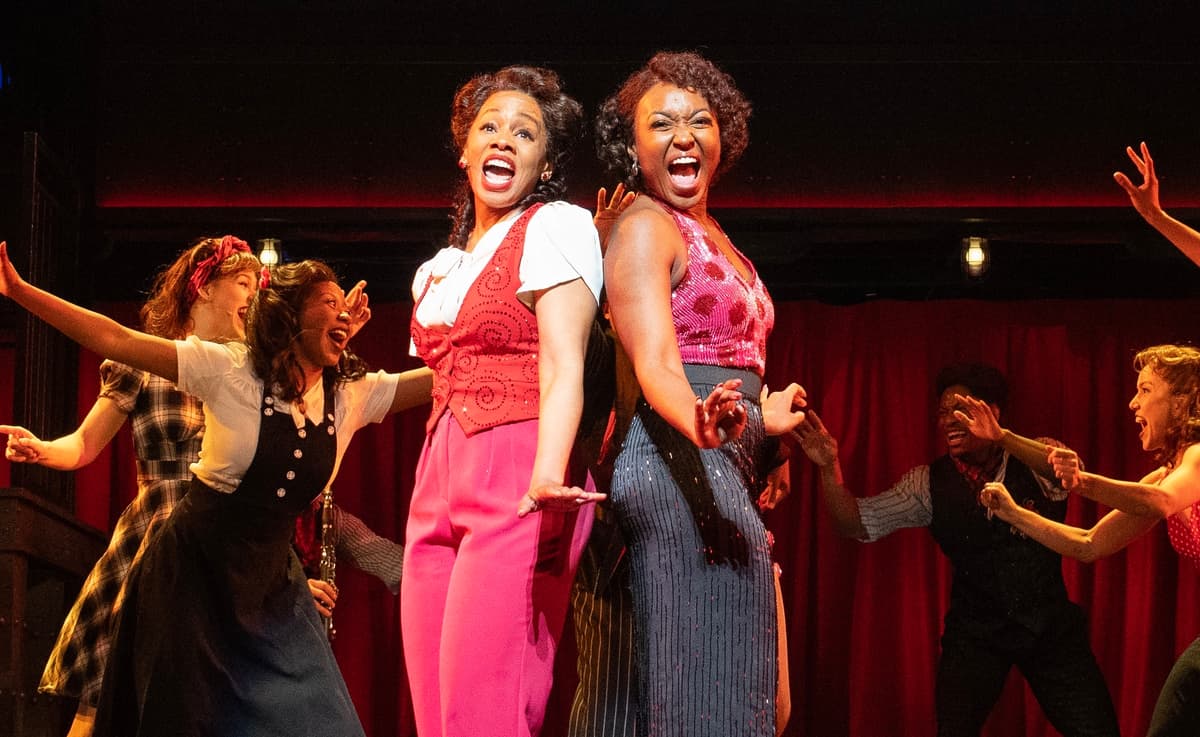A Nearly Exclusive Province of New York Theatergoers, ‘Wonderful Town’ Enjoys Another Run at City Center
Director Zhailon Levingston’s decision to cast a pair of African-American actors in the leading roles is clearly out of a desire to do something new with the story, and it works well.

‘Wonderful Town’
New York City Center Encores!
Through May 11
For all of Leonard Bernstein’s staggering accomplishments in the field of classical music, it may well be that his most remarkable contribution to world culture is the trilogy of metro-centric Broadway musicals he composed between 1943 and 1957. After all, who doesn’t love “On the Town” and “West Side Story”?
Set in New York, all three were major hits and immediate classics, and all have enjoyed significant revivals and national tours. Yet the show in the middle, 1953’s “Wonderful Town,” was never filmed by Hollywood and thus didn’t become quite as iconic or as internationally celebrated as the other two. “Wonderful Town” essentially remains the exclusive province of New York theatergoers: a show by New Yorkers, about New Yorkers, and primarily for other New Yorkers.
Not surprisingly, “Wonderful Town,” with lyrics by Bernstein’s “On the Town” collaborators, Betty Comden and Adolph Green, has been much presented in New York in the 70-plus years since it opened, but primarily in that most metro-centric of venues, the New York City Center. There have been no less than five distinct productions there, including the 2000 edition that morphed into the 2004 Broadway revival. The current production includes co-stars Anika Noni Rose and Aisha Jackson as Ruth and Eileen, the roles originated by Rosalind Russell and Edie Adams in 1953.
Although Comden, Green, and Bernstein didn’t write the book, it was truly their story, as they all had spent their formative years in Greenwich Village, where the Village Vanguard — renamed in the script as “The Village Vortex” — opened in 1935, the year in which “Wonderful Town” takes place. They matured amid the Village’s colorful characters, the lovable and not-so-lovable kooks, the painters, poets, and the peasants.
It was clearly out of a desire to do something new with the story that director Zhailon Levingston decided to cast a pair of African-American actors in the leading roles. This creates surprisingly little conflict with previous incarnations. The only issue with Ms. Rose as Ruth is that she’s significantly less uptight than Russell in 1953 or Donna Murphy in 2000 — because she’s not a stiff or a stick in the mud, it’s somewhat less funny when she’s forced to work recruiting customers for a jazz club by going around shouting swing era jive slogans.
This is a minor cavil: Practically everything else works brilliantly. Even the “Darling Eileen” number, where the younger sister tunefully protests against being identified as Irish, is somehow funnier here than ever. It’s to Mr. Levingston’s credit that the ethnic humor works as well as it did 70 years ago. What seemed like jokes built on familiar stereotypes in 1953, such as all policemen are Irish tenors and all Brazilians are champion conga dancers, now seems like cultural diversity, if hardly “woke.”
The major benediction of the production, apart from the cast and the amazing choreography by Lorin Latarro and Ayodel Casel, is the chance to hear the Bernstein-Comden-Green score with a full orchestra. Bernstein’s songs range from the symphonic — “My Quiet Girl” is clearly inspired by Tchaikovsky’s Piano Concerto No. 1 in B-Flat Minor, Op. 23 — to the resoundingly comic.
“Pass That Football” and “Wrong Note Rag” are part of that musical spectrum in which the most outrageously cartoonish music somehow exists in the same continuum as the most avant-garde, where Raymond Scott and Carl Stalling connect with John Zorn or even Alban Berg.
“Wrong Note Rag” is a formidable work that makes musical sense out of dissonant harmonies and quirky disjointed rhythms, anticipating Miles Davis’s famous quote, “It’s not the note you play that’s the wrong note – it’s the note you play afterwards that makes it right or wrong.”
Ruth’s “Swing” jingle is also a brilliant concoction in which Bernstein, Comden, and Green relive their youth by stirring in jazzy rhythm tunes from the late ‘30s: “A-Tisket, A-Tasket,” “Flat Foot Floogie,” “Ol’ Man Mose,” and, most of all, “Hold Tight,” wherein Ruth elaborates on how her favorite dish is fish.
The more straightforward love songs — “A Little Bit in Love” and “It’s Love” — are also quintessential show tunes, musical theater writing at its apogee.
The rest of the cast is suitably superb, especially Javier Muñoz as the closest thing to a traditional leading man, and Fergie Phillippe as “Wreck,” which is now-obscure, vintage slang for a college football player, as in, “Ramblin’ wreck from Georgia Tech.” Likewise, it’s great to see DeWitt Fleming as the jitterbugging proprietor of the Vortex, though I wish they’d thought of more opportunities for him to actually dance.
“Wonderful Town” is a triumph that every New Yorker owes it to himself or herself to see.

